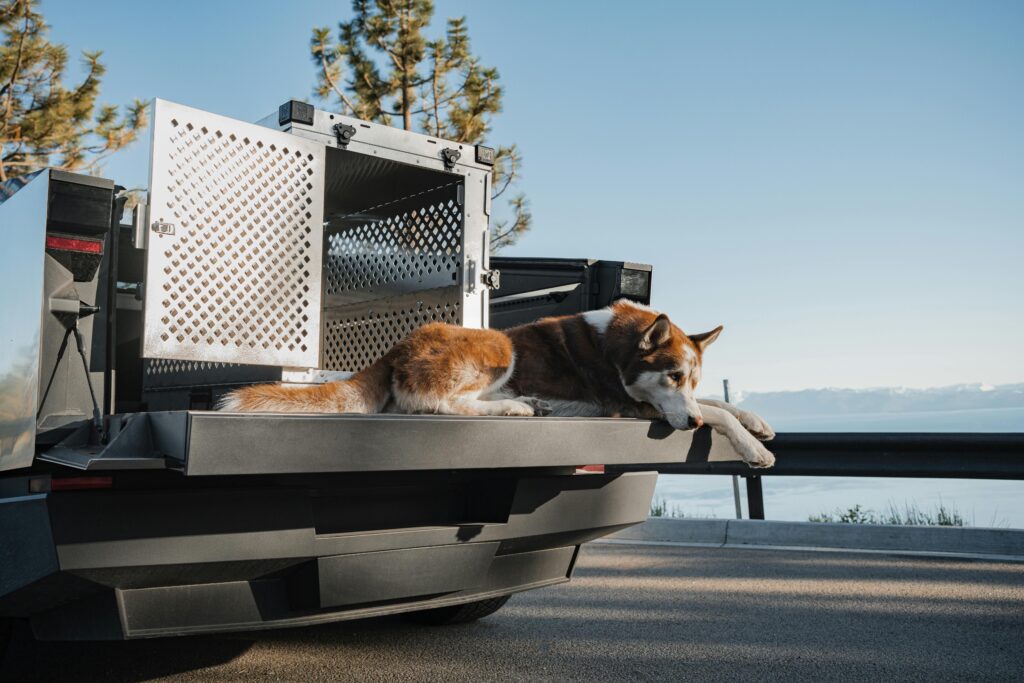For many dog owners, the crate sparks mixed emotions. Some see it as a helpful tool, while others worry it feels like “locking the dog up.” In reality, crate training, when introduced properly, is one of the most beneficial skills you can teach your dog. It’s not about punishment. It’s about creating a safe, structured environment that supports your dog’s physical and emotional well-being.
At Off Leash K9 Training Kansas, we’ve worked with countless families who were hesitant to crate train, only to realize how much it improved their dog’s confidence, safety, and obedience. Let’s break down the truth about crate training and why it matters.

Why Crates Get a Bad Reputation
The biggest misconception about crate training is that it’s a form of punishment. This usually stems from:
- Using the crate only when the dog is “bad”
- Forcing the dog into the crate without proper introduction
- Leaving dogs inside for excessively long periods
- Not making the crate a positive, rewarding place
When the crate is used inconsistently or negatively, the dog associates it with stress. But when used correctly, it becomes one of the most comforting spots in the house.
The Real Benefits of Crate Training
- Safety: Prevents chewing hazards, eating dangerous items, or running out the door when unsupervised.
- Housebreaking: Dogs instinctively avoid soiling their sleeping space, making crates a powerful potty-training tool.
- Travel: A crate-trained dog is calmer and safer in vehicles, hotels, or planes.
- Management: Creates structure when introducing new pets, kids, or guests.
- Confidence Building: Dogs learn to self-soothe and settle independently.
Crate training isn’t just convenient, it’s life-saving in emergencies. In situations like evacuations, vet stays, or grooming appointments, dogs already comfortable with crates experience far less stress.
How to Introduce the Crate Positively
- Start Slowly: Place the crate in a quiet but social area of the house.
- Keep the Door Open: Allow your dog to explore without pressure.
- Make It Comfortable: Add bedding, toys, or a safe chew.
- Pair with Rewards: Feed meals or give treats inside to build positive association.
- Short Sessions First: Begin with minutes, not hours.
The goal is to help your dog view the crate as a retreat, not a trap.
Crates and Travel: A Perfect Match
One of the most overlooked benefits of crate training is smoother travel. Whether you’re heading on a road trip or staying in a hotel, a crate-trained dog transitions more easily. If you’re planning fall adventures, our blog on crate training your travel companion gives step-by-step advice for making trips stress-free.
How Long Is Too Long?
While crates are invaluable, they should never replace exercise or companionship. General guidelines are:
- Puppies under 6 months: 3–4 hours at a time
- Adult dogs: 4–6 hours at a time, depending on activity needs
- Overnight: 7–8 hours, if the dog has had adequate exercise beforehand
Balance crate time with structured play, walks, and training to keep your dog healthy and happy.
Crate Training as Part of Obedience
Crate training works best when combined with obedience cues like place, sit, and down-stay. These skills reinforce structure and calmness in different areas of your dog’s life. Our Basic Obedience Program integrates crate and place training seamlessly so your dog learns to settle in any environment.
Expert Advice on Routine and Structure
According to the American Kennel Club, crate training is one of the most effective ways to prevent behavior problems and housebreaking issues. Their guidance highlights that with consistency and patience, most dogs can be crate trained successfully without stress.
Final Thoughts
Crate training isn’t about restriction. It’s about freedom, the freedom to travel confidently, leave the house without worry, and create a calm, balanced environment for your dog. When introduced with patience and positivity, the crate becomes a sanctuary, not a punishment.
If your dog struggles with crate training or shows signs of separation anxiety, we can help. Our trainers specialize in creating personalized plans that build confidence and independence. Get started today by reaching out through our contact page.
